Our verdict
Pros
- Support that's not harsh
- Impact-absorbing
- Gives your stride a boost
- Very comfy for recovery runs
- Stable when cornering
- Breathable
- Keeps the foot in place
- Grip that sticks
Cons
- Long break-in period
- Comes with a hefty tag
Audience verdict
- Top 29% in road running shoes
- Top 21% in stability running shoes
Comparison
The most similar running shoes compared
+ + Add a shoe | |||||
|---|---|---|---|---|---|
| Audience score | 89 Great! | 88 Great! | 85 Good! | 88 Great! | |
| Price | $170 | $170 | $140 | $150 | |
| Pace | Daily running | Daily running | Daily running | Daily running | |
| Arch support | Stability | Stability | Stability | Stability | |
| Weight lab Weight brand | 11 oz / 313g 11.2 oz / 318g | 11.6 oz / 329g 11.8 oz / 334g | 10.4 oz / 295g 10.5 oz / 298g | 11 oz / 312g 10.9 oz / 309g | |
| Drop lab Drop brand | 6.5 mm 8.0 mm | 7.2 mm 8.0 mm | 9.3 mm 8.0 mm | 5.6 mm 6.0 mm | |
| Strike pattern | Mid/forefoot | HeelMid/forefoot | HeelMid/forefoot | Mid/forefoot | |
| Size | True to size | Slightly small | Slightly small | True to size | |
| Midsole softness | Balanced | Balanced | Soft | Soft | |
| Difference in midsole softness in cold | Small | Normal | Big | Normal | |
| Toebox durability | - | Decent | Decent | Decent | |
| Heel padding durability | - | Bad | Bad | Good | |
| Outsole durability | - | Good | Decent | Good | |
| Breathability | - | Moderate | Moderate | Warm | |
| Width / fit | Medium | Medium | Medium | Medium | |
| Toebox width | - | Wide | Medium | Medium | |
| Stiffness | Stiff | Stiff | Moderate | Moderate | |
| Torsional rigidity | Moderate | Stiff | Moderate | Moderate | |
| Heel counter stiffness | Stiff | Stiff | Stiff | Stiff | |
| Rocker | ✗ | ✗ | ✗ | ✓ | |
| Heel lab Heel brand | 37.1 mm 38.0 mm | 39.1 mm 41.0 mm | 36.8 mm 38.0 mm | 36.1 mm 35.5 mm | |
| Forefoot lab Forefoot brand | 30.6 mm 30.0 mm | 31.9 mm 33.0 mm | 27.5 mm 30.0 mm | 30.5 mm 29.5 mm | |
| Widths available | NormalWide | NormalWide | NarrowNormalWideX-Wide | NormalWideX-Wide | |
| Orthotic friendly | ✓ | ✓ | ✓ | ✓ | |
| Season | - | All seasons | All seasons | Winter | |
| Removable insole | ✓ | ✓ | ✓ | ✓ | |
| Ranking | #169 Top 26% | #133 Top 37% | #215 Bottom 41% | #123 Top 34% | |
| Popularity | #538 Bottom 17% | #295 Bottom 20% | #35 Top 10% | #34 Top 10% |
Size and fit
Size
Mizuno Wave Horizon 6 fits true to size (28 votes).
Who should buy the Mizuno Wave Horizon 6
Because it's highly cushioned and protective, we believe that the sixth version of the Mizuno Wave Horizon deserves your attention if you want a:
- supportive running shoe for daily training and recovery runs
- road shoe for easy, long runs
- highly cushioned shoe that's equally stable but not harsh for both overpronators (feet roll inward) and neutral runners.
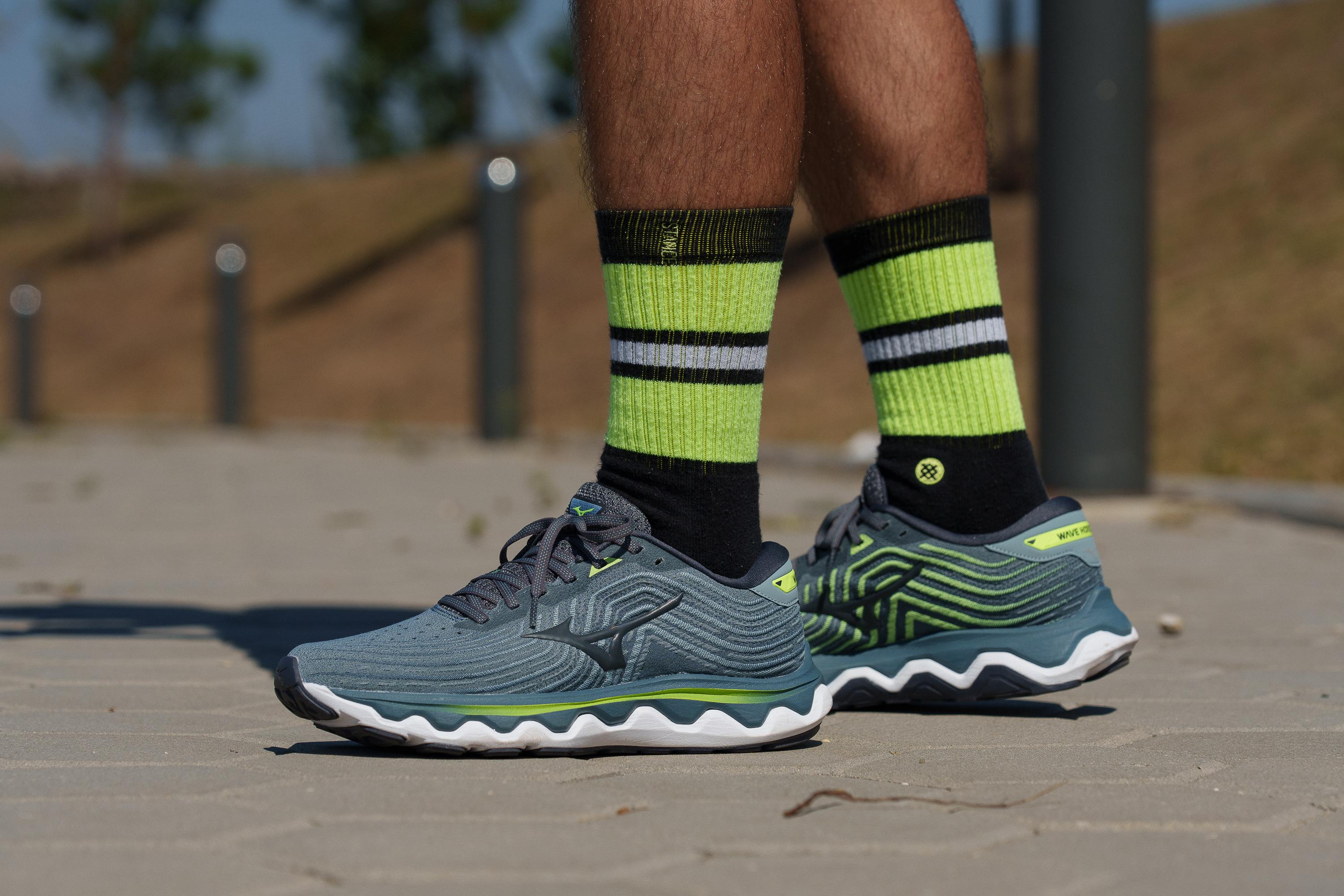
Who should NOT buy it
The Mizuno Wave Horizon is not perfect. One, it's a behemoth. And two, its break-in period is exhaustingly long. If you don't want any of these, then we highly suggest going for the Mizuno Wave Inspire 19 instead.
And if you want a daily trainer that can also pick up the pace, check out the Saucony Tempus.

Mizuno Horizon 6 vs. 5
- For a squishier and responsive ride, a new midsole is introduced.
- Out goes the old mesh upper and in comes the new eco-friendly stretch-woven upper, offering a better foothold while being more accommodating.
- It has better stability owed to its wider base.
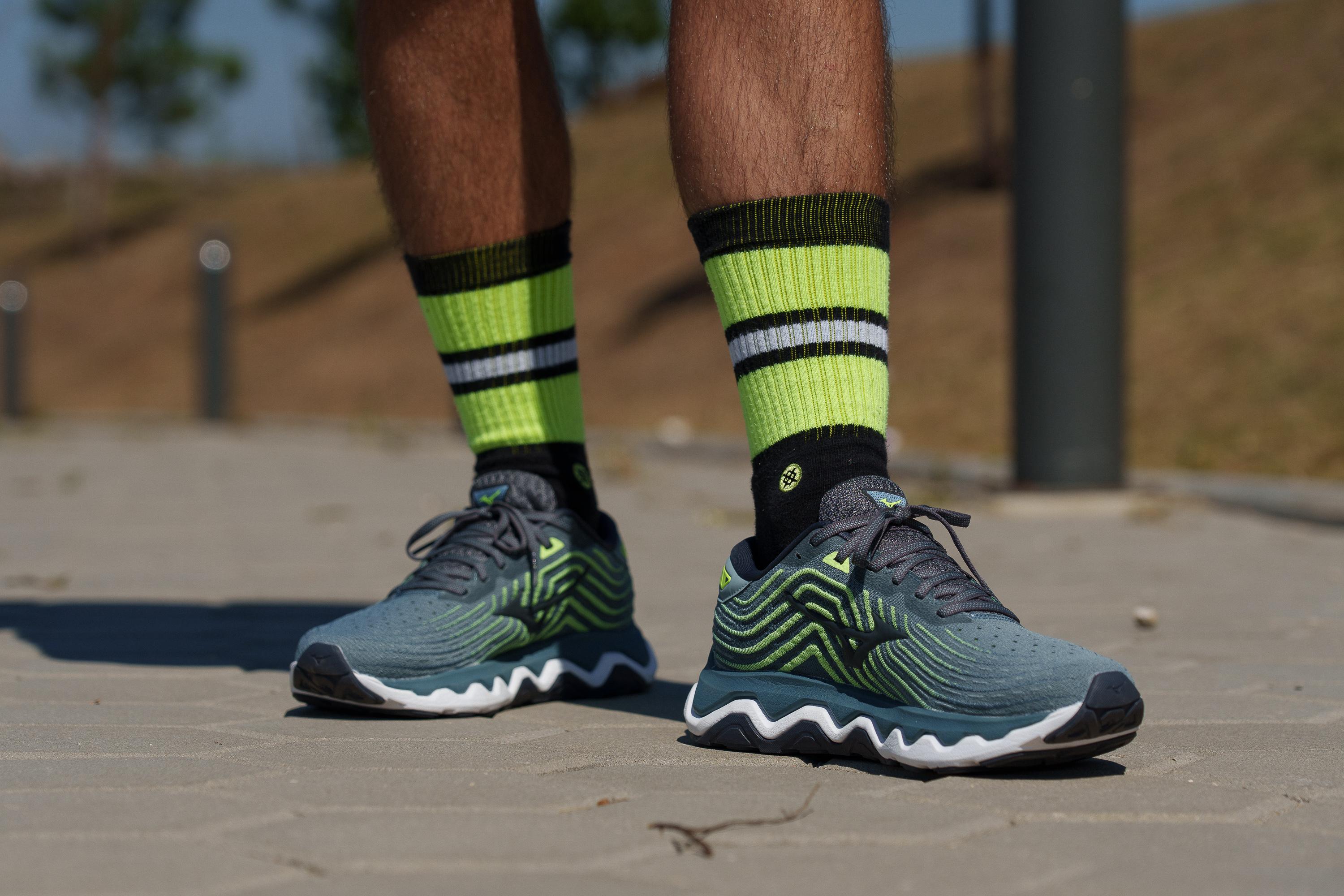
Less intrusive but more stable
Unlike many other stability running shoes that can feel overly restrictive and stiff, the Horizon 6 doesn't feel harsh at all! But where does its stability come from?

The shoe's midsole has 3! layers - they all scored differently on our durometer. But, they averaged at 22 HA. Turns out, that the Horizon 6 is even 10% softer than the average running shoe we tested. What gives it that spot-on touch is, most likely, the combination of the 3 layers.
What also might have helped is a heel counter that is very stiff. On our test, it scored 5 out of 5 which means it is the stiffest. The average for all the shoes we've tested so far is 3.0.
Last but not least, the Horizon 6 has a mind-blowingly wide base! We couldn't believe our caliper as it showed 119.5 mm in the widest part of the forefoot and 97.2 mm in the heel! That is 6-7 mm wider than a road running shoe on average!
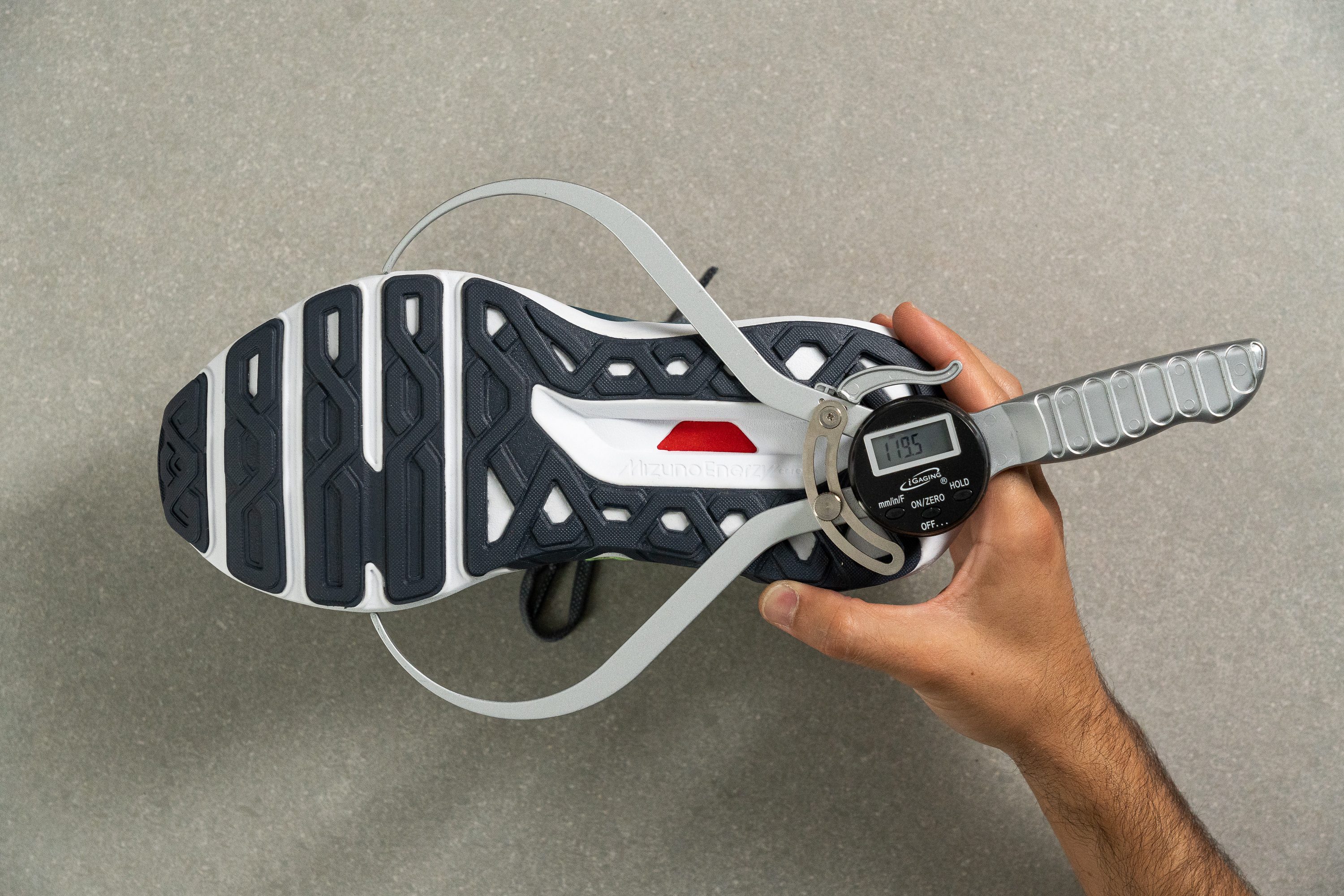
Heel drop lower than advertised
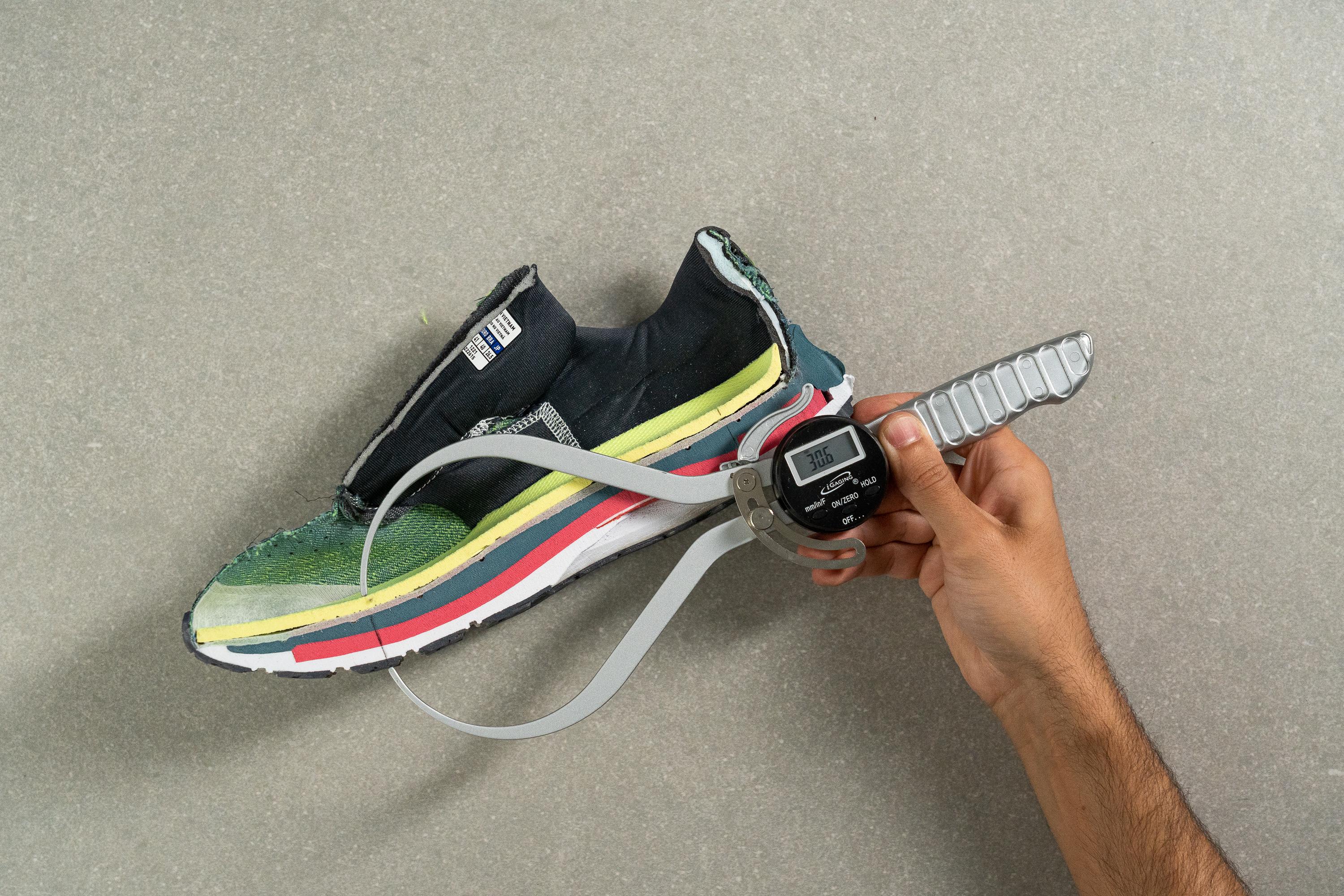
Mizuno says 8 mm but we measured 6.5 mm! Based on our caliper measurement, the heel stack height is 37.1 mm while the forefoot is 30.6 mm.
That's a lot of cushioning too!
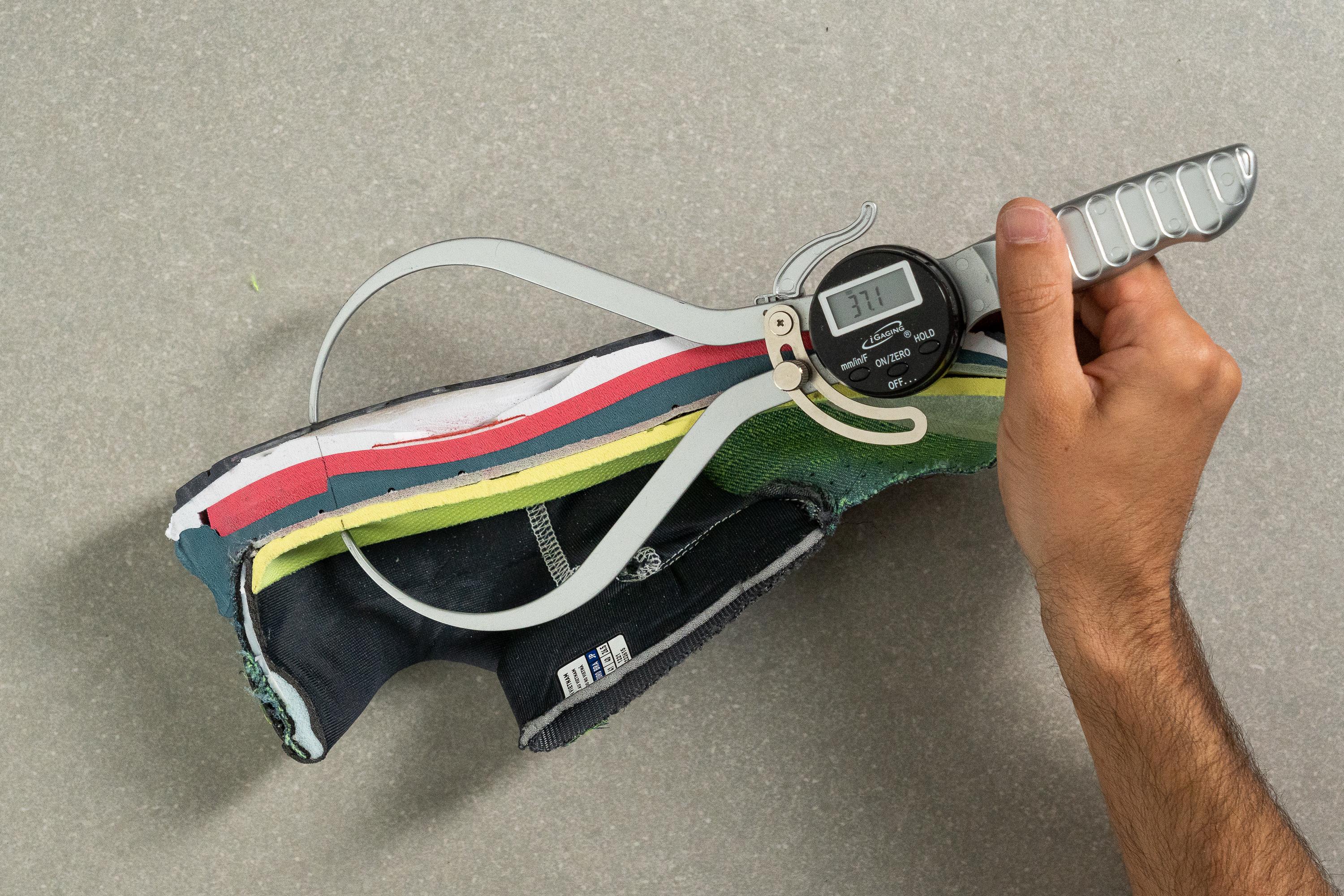
MUCH stiffer in cold weather
Our lab tests also go on to check how the shoe behaves in cold weather which we simulate by putting the shoe in the freezer for 20 mins. After that, we check flexibility and softness. Mizuno Horizon 6 got these results:
- flexibility has decreased by 76.9%! It went from 34.6N to 61.2N needed to flex the shoe. Keep in mind that the average change for flexibility from room temperature to the freezer is 21.7%.
- softness has changed very little, you would most likely not even notice it. It went from 22.0 to 25.2 on our durometer, which is a 14.5% change and the average is 21.7%.
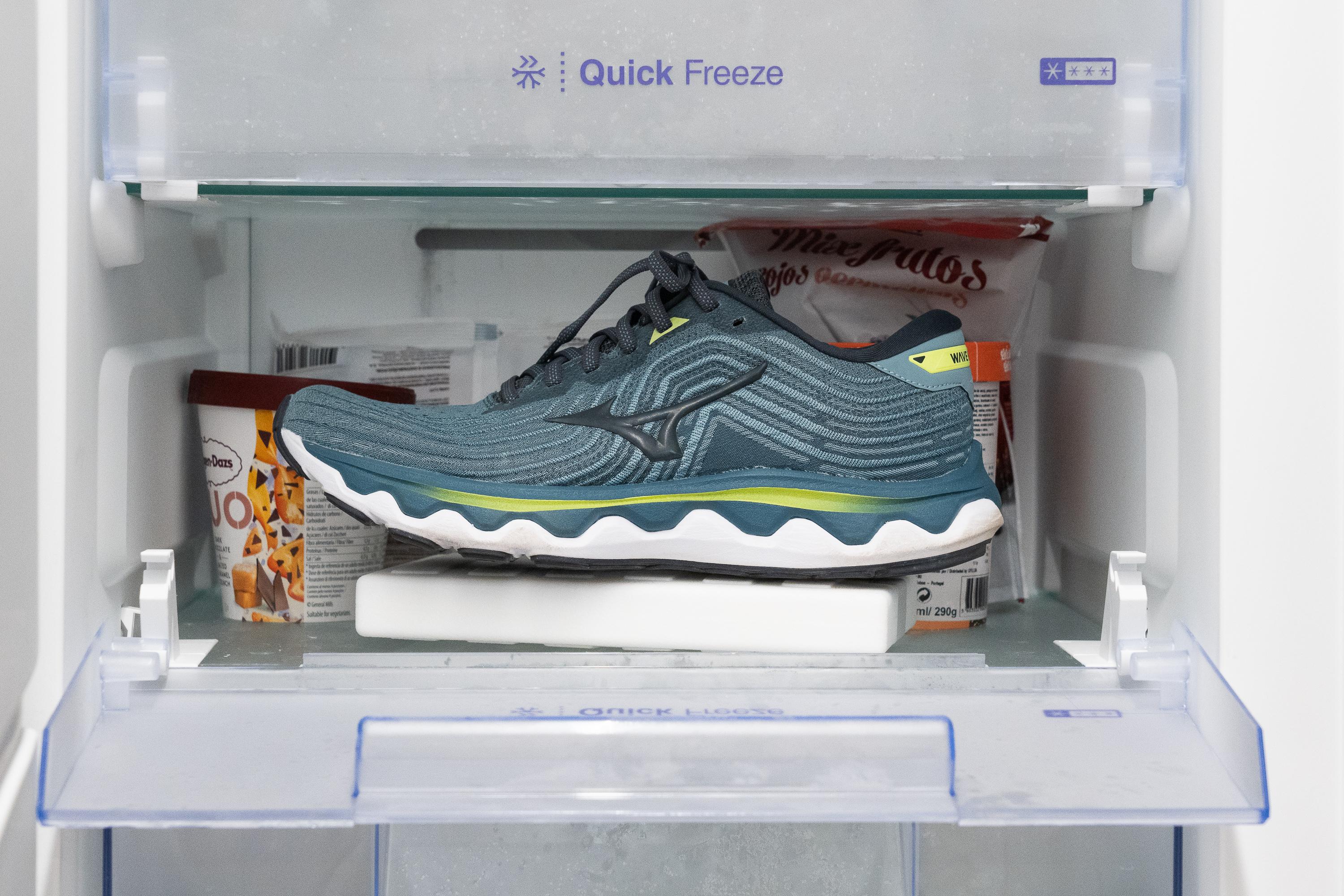
It's fun, not boring
We thoroughly enjoyed the shoe's ride as it is noticeably more responsive and lively than the past version.
What is also great about this Mizuno shoe is that apart from the fun it offers, it also brings lots and lots of shock absorption, thanks to its generous cushion.
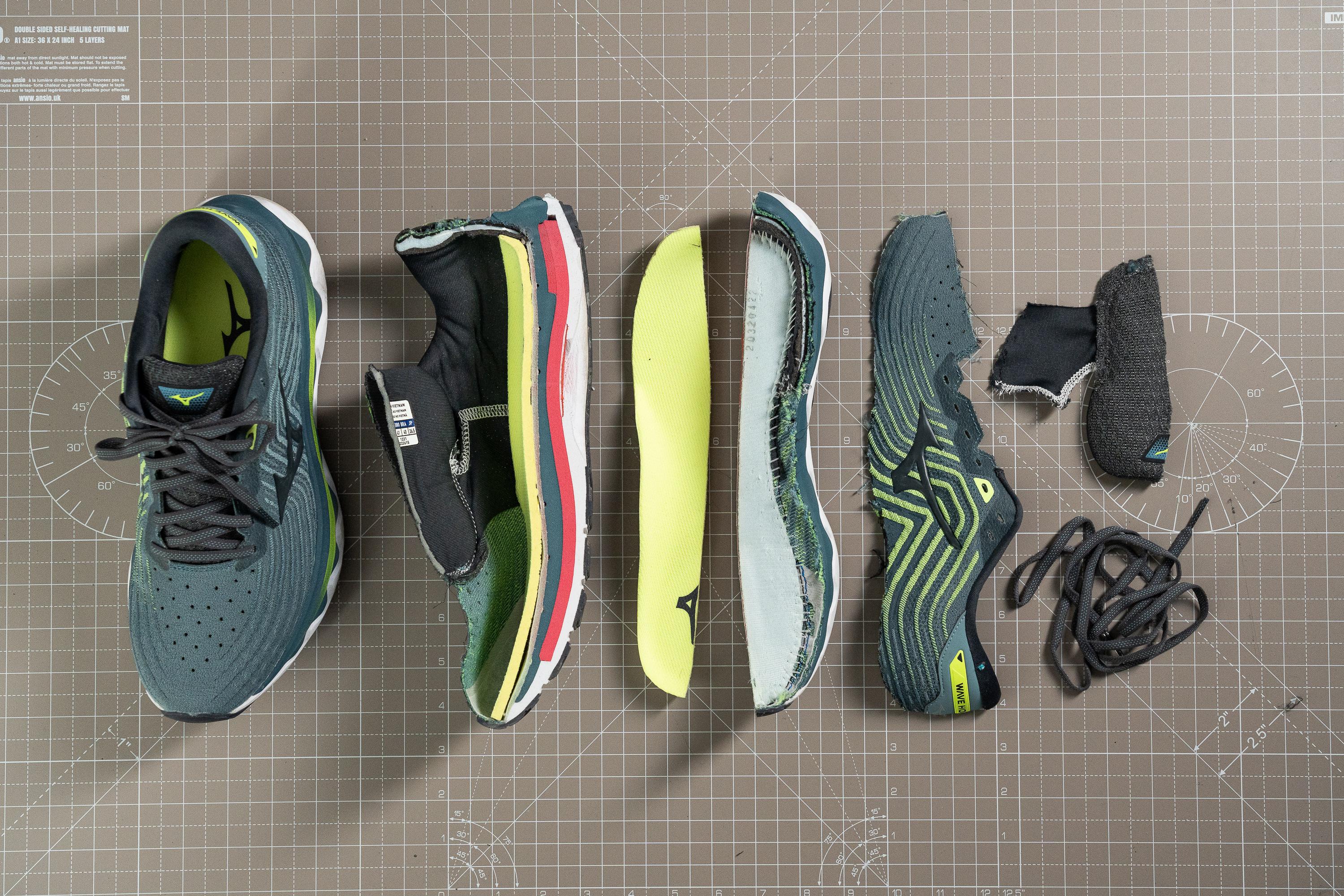
The break-in period is long
Despite all the good stuff about the shoe's midsole, one thing that can make this running shoe less likable is the lengthy adjustment period it requires.

We believe that this is caused by the shoe's rather stiff build. Performing our flexibility tests, we found that it takes 34.6N of force to bend the shoe. This is 13% more force than it takes on average.
The Wave Horizon 6's upper crushes it!
It's flexible, airy, and offers an awesome lockdown. And what's even greater is that it doesn't have a lot of fuss.
Even the thickness of the tongue confirms this breathable "no fuss" design - for Horizon 6, it sits at 3.6 mm while the average is 6.0 mm.
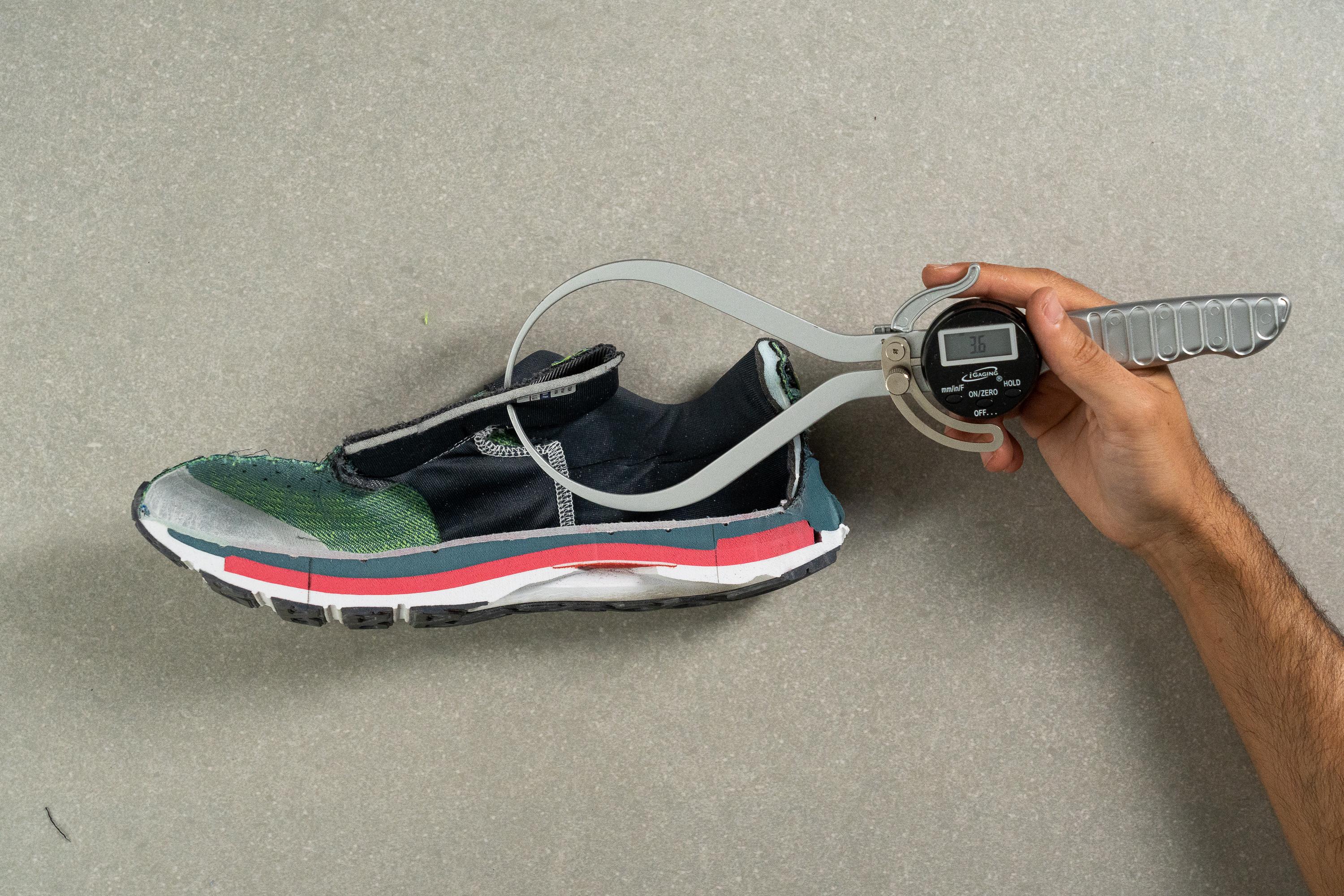
Lockdown couldn't be more awesome
Speaking of lockdown, it's terrific! Complementing the non-squeezing upper is the non-gusseted tongue (not attached to the sides) that does a great job of keeping a movement-free hold.

Average weight for a stability shoe
The Mizuno Wave Horizon 6 is expectedly heavier given its massive cushioning and arch support. But at 303 grams/10.7 ounces, it's almost as heavy as an average stability shoe.
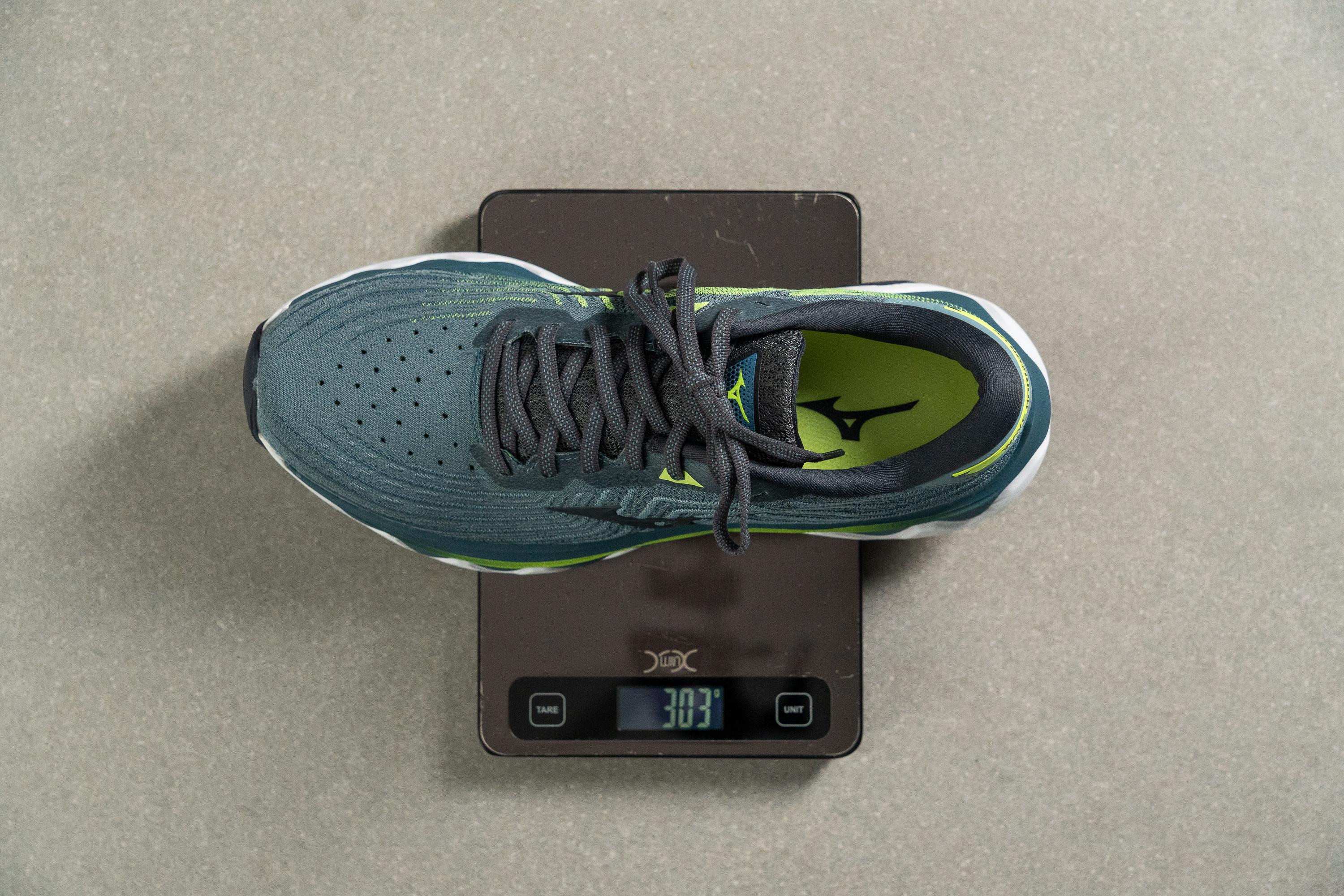
Just for context, stability running shoes, on average, weigh 297 grams/10.4 ounces.
It lasts!
We expect a long and happy life from the Mizuno Horizon 6. This is based on both our lab tests and the lack of wear-and-tear after 30 miles of running in the shoe.
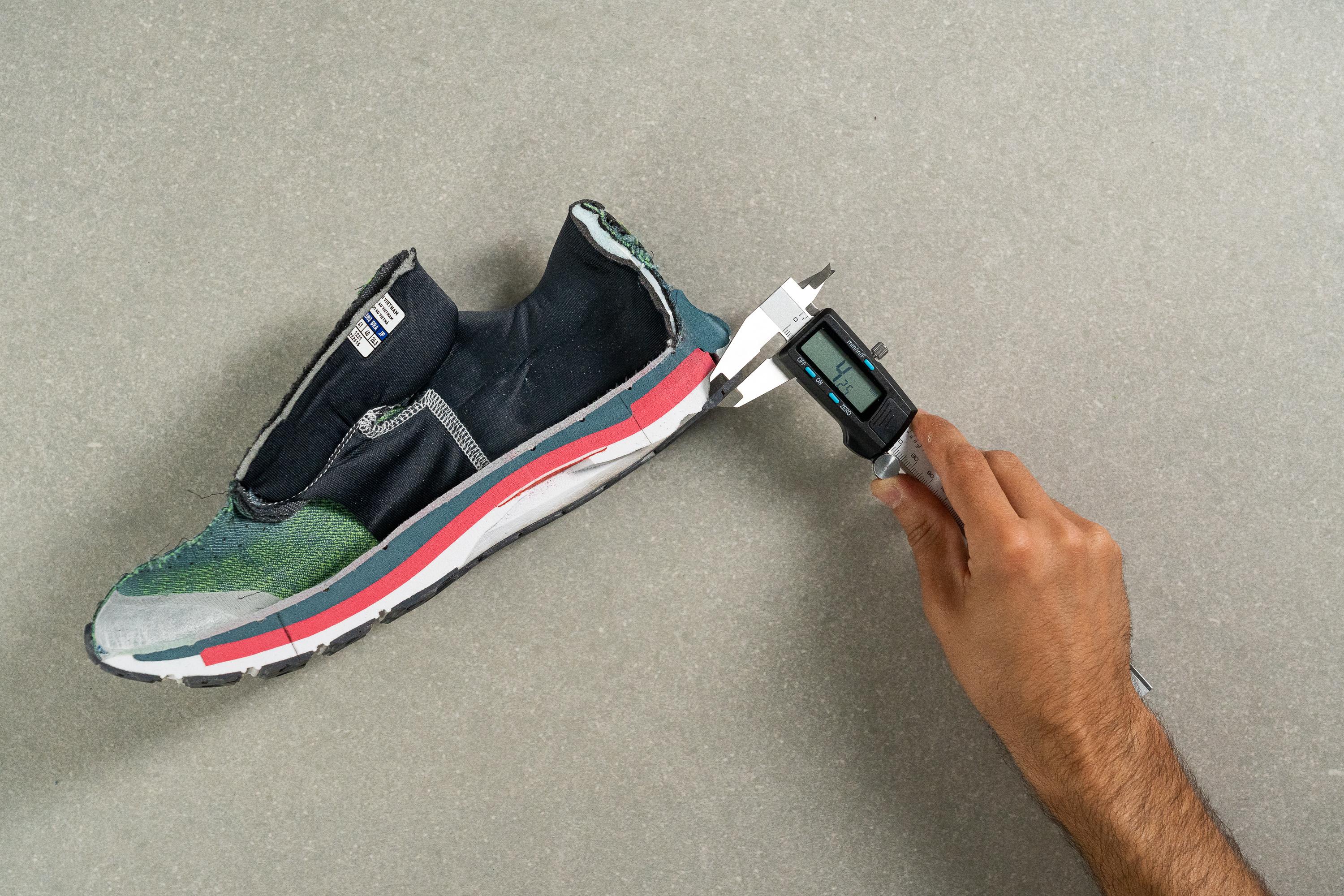
Looking at our lab numbers, the outsole is 4.3mm thick while the average outsole thickness in our database is 3.6mm.
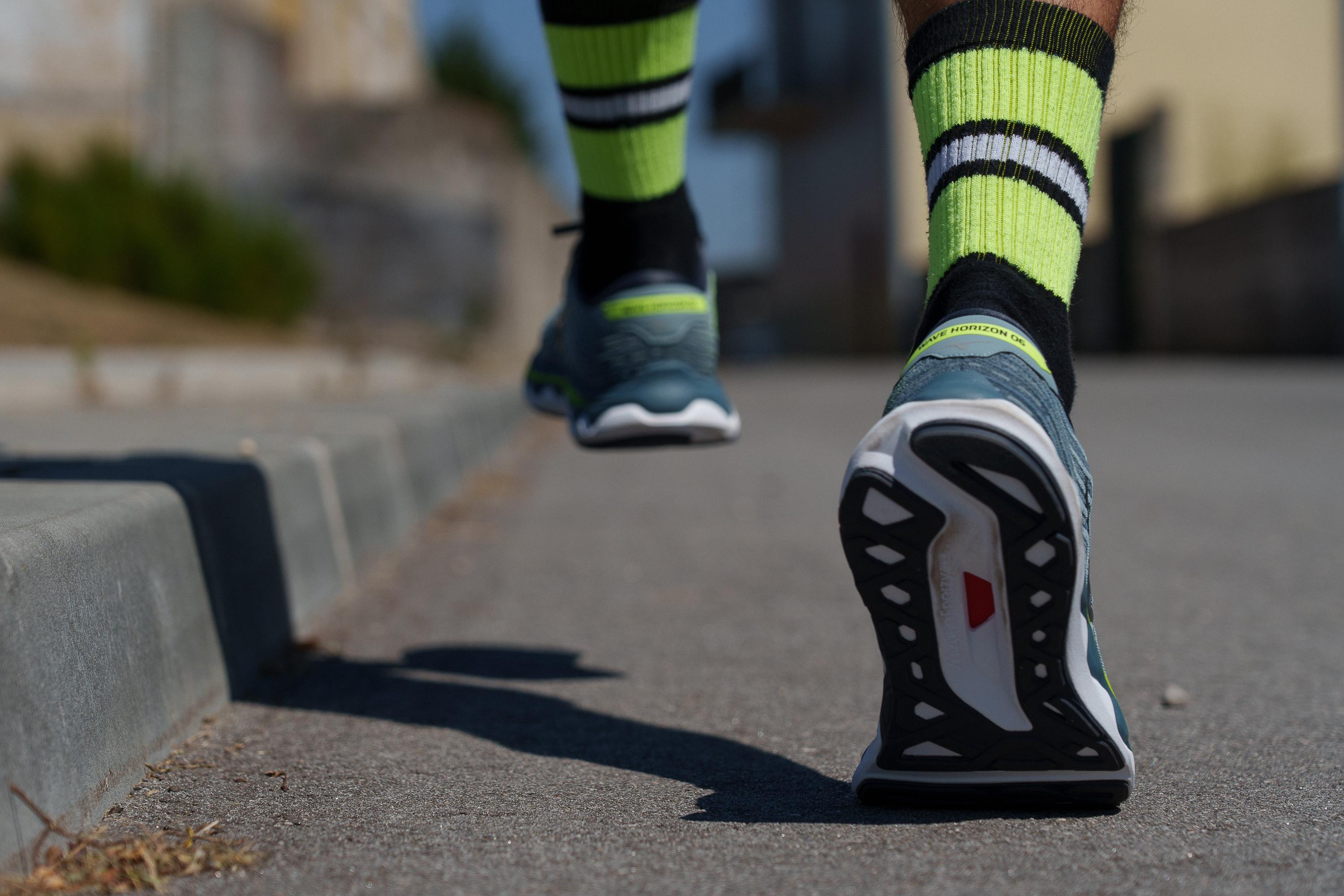
The price is over the top
As much as the Horizon 6 has to offer, we are still not convinced that its $170 price tag is fully justified.
Even "the king of stability shoes," the Kayano 30 itself comes in at $160.
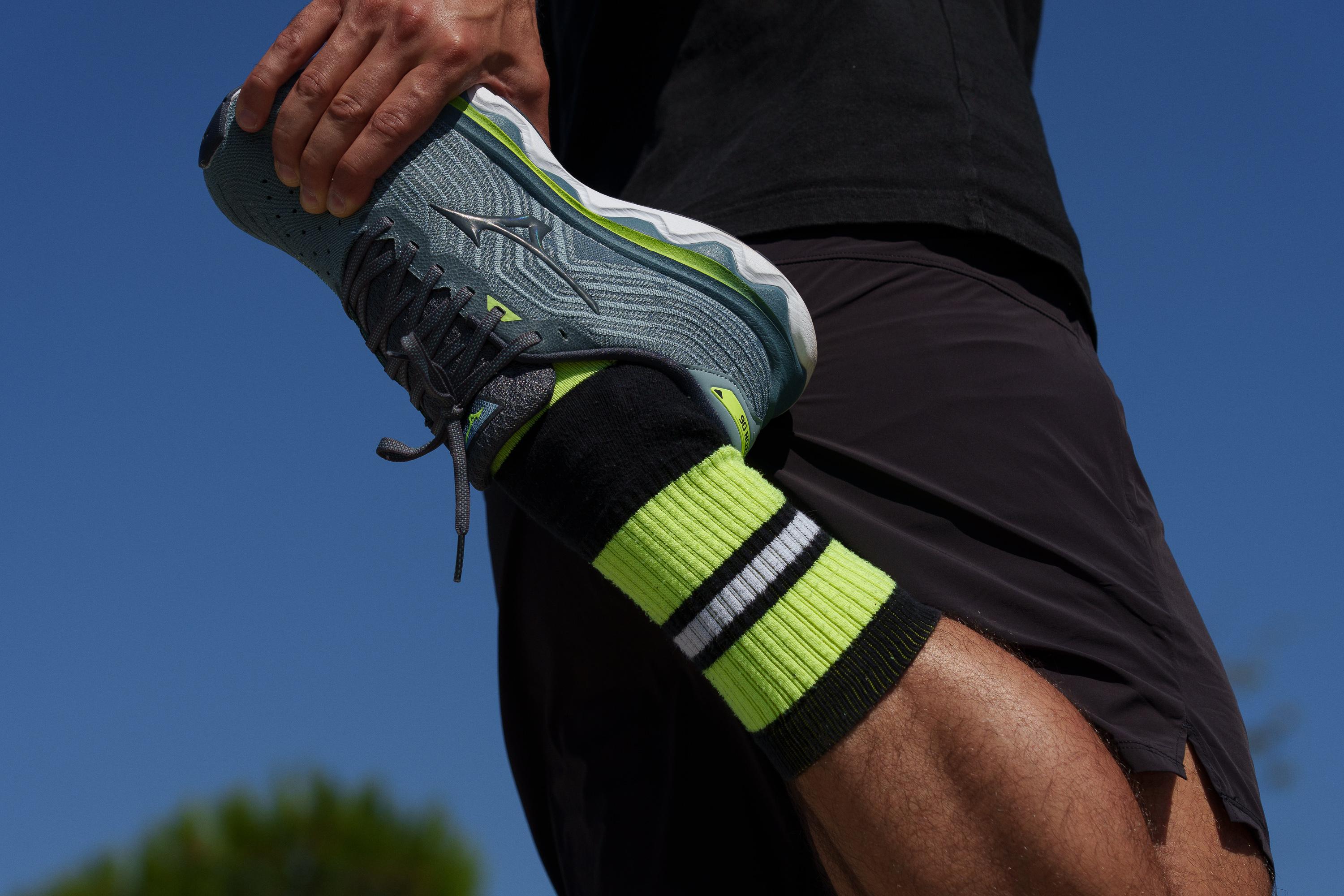
Not your best night-run shoe
While it has some reflective elements, they are rather small and not so flashy.



























